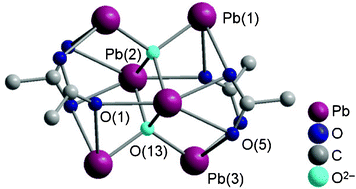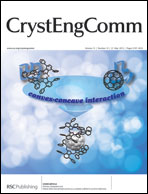Syntheses, structures and luminescence properties of novel metal–organic frameworks based on zinc(ii), cadmium(ii) or lead(ii) and a 2,2′-dimethoxy-functionalised biphenyl linker†‡
Abstract
Three metal–organic frameworks (MOFs) based on zinc(II) (1), cadmium(II) (2) or lead(II) (3) and the functionalised biphenyl linker biphenyl-2,2′-dimethoxy-4,4′-dicarboxylate, [4,4′-(CO2)2-2,2′-(OMe)2-1,1′-(C6H3)2] (L), were synthesised. Compounds 1 and 3 exhibit different three-dimensional networks with the Zn4O(O2C)6(H2O) unit as the secondary building unit (SBU) in the Zn-based MOF [{(Zn4O)(L)3(H2O)}·4.5DMF]n (1) and Pb6O2(O2C)4 clusters as SBU in the Pb-based MOF [{(Pb6O2)L4}·2EtOH]n (3), as shown by


 Please wait while we load your content...
Please wait while we load your content...